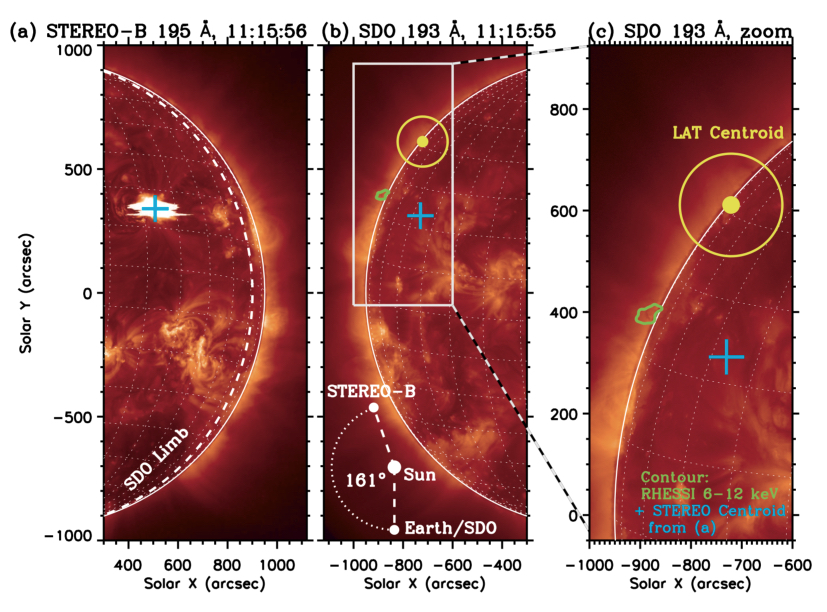
 Credit: NASA/DOE/Fermi; M. Ackerman et al.
Credit: NASA/DOE/Fermi; M. Ackerman et al.
Fireworks From the Far Side
Solar
flares are powerful explosions from the surface of the Sun which can eject
tons of high-energy subatomic particles into space at nearly the speed of light.
If the earth happens to be in the path of this dangerous, fast streaming solar
material, beautiful aurorae may be
seen, but significant
damage can be done to fragile communications networks, electrical grids and
earth-orbiting satellites. Thus it's in humanity's best interest to watch the
Sun and keep an eye on the location of these deadly solar outbursts.
Observations of the Sun with the Fermi
Gamma-ray Space Telescope have shown how solar flares on the far side of the
Sun can produce very high energy Gamma-ray emission on the side of the Sun
facing earth. On three occasions (October 11, 2013, January 6 2014 and September
1, 2014) the sun-observing STEREO
spacecraft, looking at the far side of the Sun, saw strong solar flares
accompanied with ejections of matter. A few minutes later, Fermi's Large Area
Telescope detected strong Gamma-ray emission from the near side of the Sun.
These events were also seen at lower energies by the Fermi Gamma-ray Burst
Monitor, the Reuvan Ramaty
High Energy Solar Spectroscopic Imager (RHESSI) satellite, Konus-Wind,
the Solar Dynamics Observatory (SDO),
and the ground-based Radio Solar
Telescope Network. The image above shows the localization of the September
1, 2014 flare seen by STEREO on the far side of the Sun, and the SDO and the
LAT localizations of emission on the near side of the Sun. Scientists believe
that fast moving subatomic particles generated by the flares on the far side of
the Sun follow the Sun's bent magnetic field lines, which deflects them and
causes them to rain down on the near side of the Sun, producing the Gamma-rays
seen by the LAT.
Published: July 3, 2017
<
HEA Dictionary ● Archive
● Search HEAPOW
● Other Languages
● HEAPOW on Facebook
● Download all Images
● Education ● HEAD
>

Each week the HEASARC
brings you new, exciting and beautiful images from X-ray and Gamma ray
astronomy. Check back each week and be sure to check out the HEAPOW archive!
Page Author: Dr. Michael F. Corcoran
Last modified Tuesday, 27-Feb-2024 10:08:16 EST


